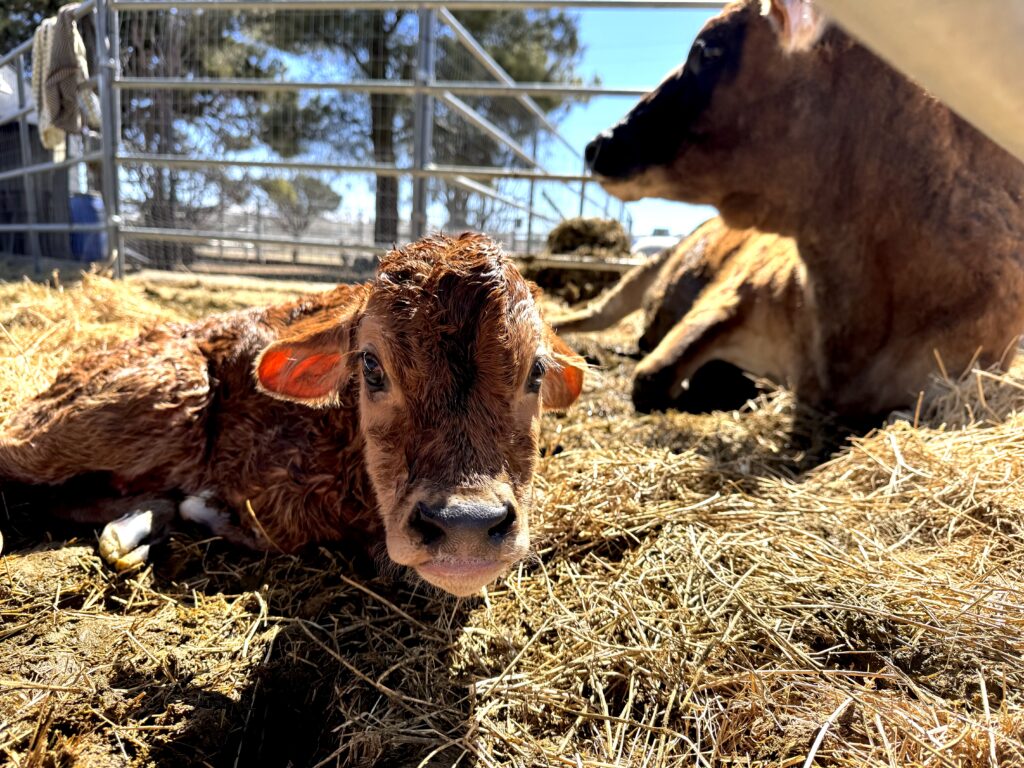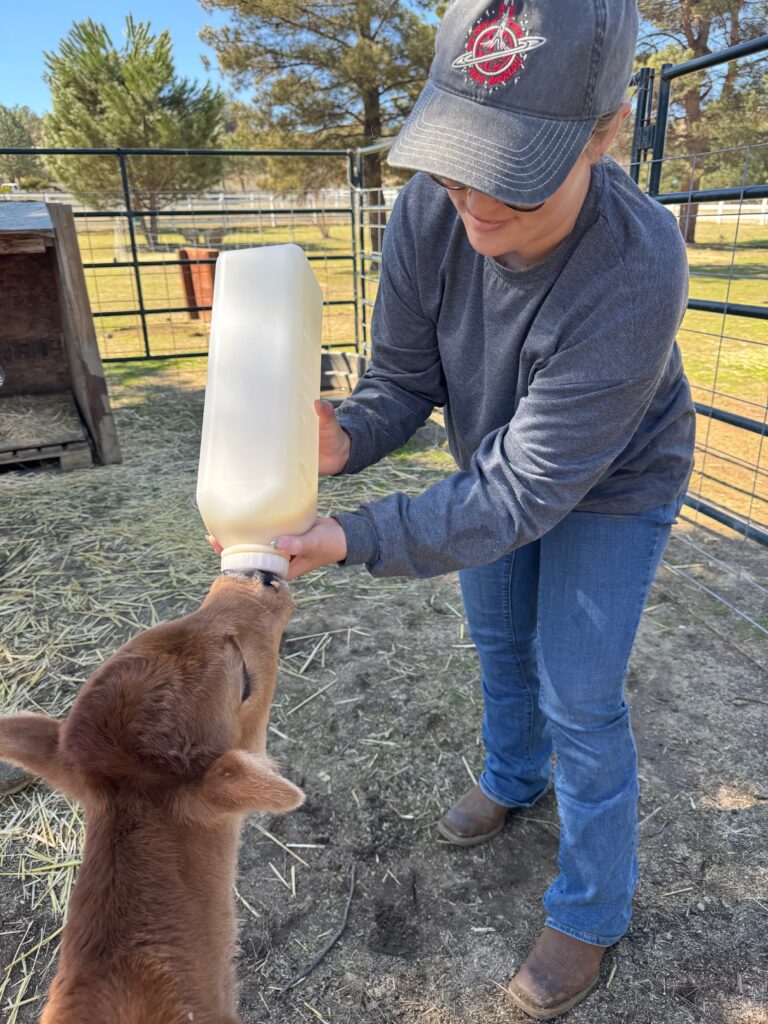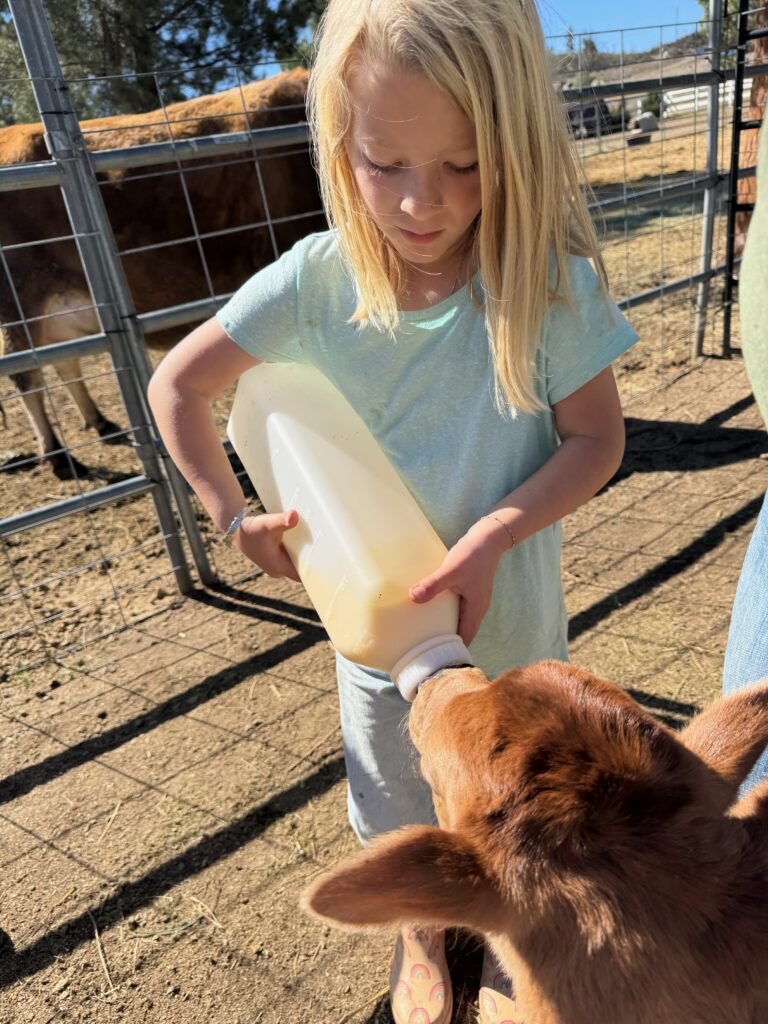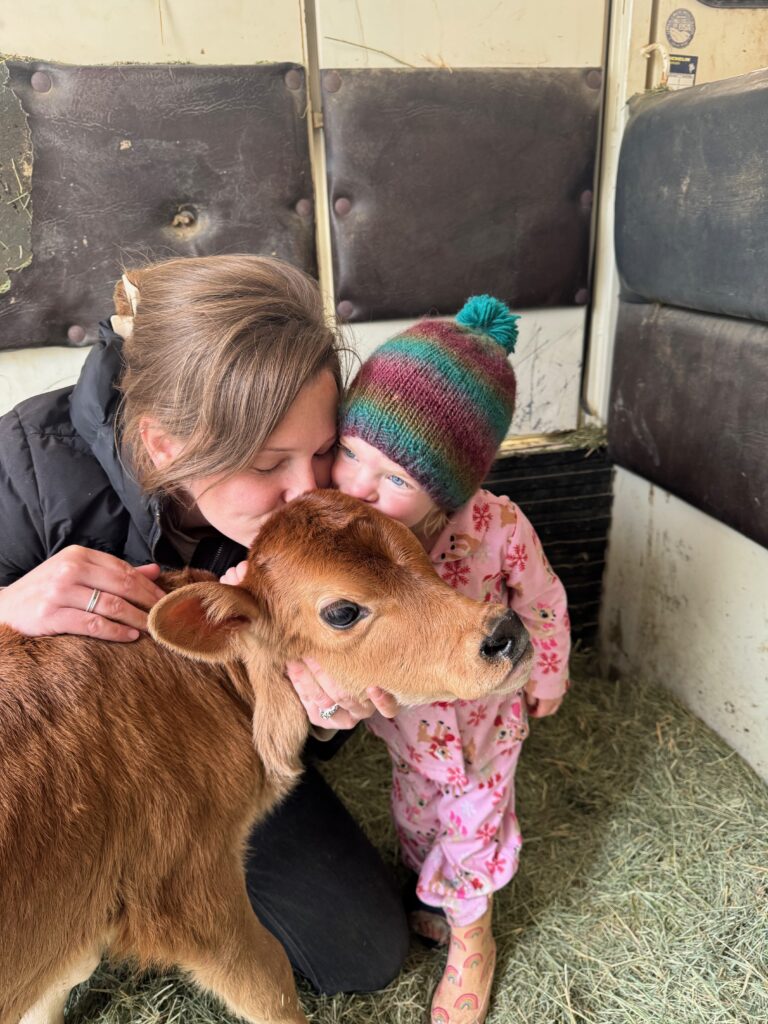
What is Calf Sharing?
Calf sharing refers to a practice, primarily used in dairy farming, where a calf is allowed to drink milk directly from its mother, but the milk is shared with human use as well. This process typically happens in situations where the farm is using the mother’s milk for production, but still allows the calf access to the mother’s milk for a certain period. In calf sharing, the calf is not bottle-fed, nor is the milk entirely taken away from the mother. Instead, the milk is divided or “shared” between the calf and the farm.
Sounds pretty great right? During our research while Dolly (our momma cow) was pregnant, we found a list of reasons NOT to calf share.

Benefits of Bottle feeding a Calf:
Bottle feeding a calf is often preferred over letting the calf nurse from the cow for several reasons, including health management, growth monitoring, and disease prevention. Here are some key advantages:
1. Ensures Adequate Colostrum Intake
- Newborn calves need colostrum (the first milk from the mother) within the first few hours of birth for essential antibodies. In our experience, Rosemary (our calf) was born and was getting to the time to nurse and Dolly wouldn’t let her nurse. So we milked Dolly out and gave all the colostrum to Rosemary.
- If a calf doesn’t get 10% of their body weight in colostrum within the first 12 hours of birth, sets them up for lifetime of sickness.
- Bottle feeding allows farmers to measure and ensure that the calf gets the right amount of high-quality colostrum.
2. Disease Prevention
- Reduces the risk of infections that can be transmitted from the mother to the calf through direct nursing.
- Helps prevent mastitis in the cow, as bottle feeding minimizes the irregular suckling behavior that could harm the udder.
- Calves “head butt” the udder to promote let down of the milk, and are pretty hard on the teats causing open sores to develop from the calf biting and pulling. Open sores on teats are a recipe for infection.
3. Better Monitoring of Nutrient Intake
- Bottle feeding ensures that each calf gets the necessary amount of milk, avoiding cases where a weaker calf may not get enough if nursing from the cow.
- Some farmers choose to use a milk replacer to monitor the proper vitamins in the milk, we decided to use the milk from the mom as a more natural approach.
4. Easier Handling and Management
- Bottle-fed calves tend to be more accustomed to human interaction, making them easier to manage for future health checks, handling, and in our calf becoming a family milk cow in the future. From talking to other experienced farmers, we found that calves are often unfriendly when not bottle fed, leading to a difficult road of training.
5. Encourages Early Weaning and Growth Control
- With bottle feeding, calves can be transitioned to starter feed and hay at an optimal rate, promoting rumen development for better digestion and growth.
6. Consistency and Quality Control
- Bottle feeding ensures calves receive milk at regular intervals, preventing issues like overfeeding or underfeeding.
- The milk quality can be controlled, ensuring proper temperature, cleanliness, and nutrient balance.
7. Easier Health Monitoring
- Bottle-fed calves can be more closely observed for signs of illness, such as scours (diarrhea) or dehydration.
- Farmers can quickly adjust the diet if needed, such as adding electrolytes for hydration support.

Frequently Asked Questions:
Are you taking all the milk from the calf?
Dairy cows produce well over the amount a calf drinks. A calf starts out drinking about a gallon a day, but our momma cow is producing 6 gallons a day right now! (These amounts vary depending on the breed of cow and the size of the calf)
Is the calf sad when separated from it’s mom?
They told me no… I’m just kidding. In our experience neither Dolly or Rosemary seemed bothered at all. You can tell when a cow is stressed, and neither has shown any signs of that. We do keep the calf right next to her mom’s pasture (until it was snowing) so maybe that helped.
Do you have to wake up in the middle of the night to feed?
Typically calves eat every 12 hours, when they are older they will possibly add in a small feeding in between that. We like to feed our calf every time we milk to give her the freshest milk, that’s the closest to body temperature.
What are you going to do with the calf?
As much as we’d love to keep her, because we are absolutely in love and very bonded to her, we are a small farm/homestead. Every animal we have on the farm has to serve a purpose and also each animal costs money. The whole purpose of us breeding Dolly was to provide fresh raw milk for our family. She is doing exactly that and more! We have to opportunity to now provide that to another family with this calf in the future, so we will be selling her when it is time.

While bottle feeding has its advantages, it also requires more labor and attention compared to allowing the calf to nurse naturally. However, for our situation, the benefits outweigh the extra effort, so we decided not to do calf sharing.
We are well aware this is not the path everyone chooses. We believe everyone’s situation is different and we chose what we felt is best for our homestead, our family, and the health of our animals. Although each animal serves a purpose and has a job on the farm, we do our best to give them the most love and best living conditions we possibly can.
We’d love to answer any more questions you may have!

Leave a Reply